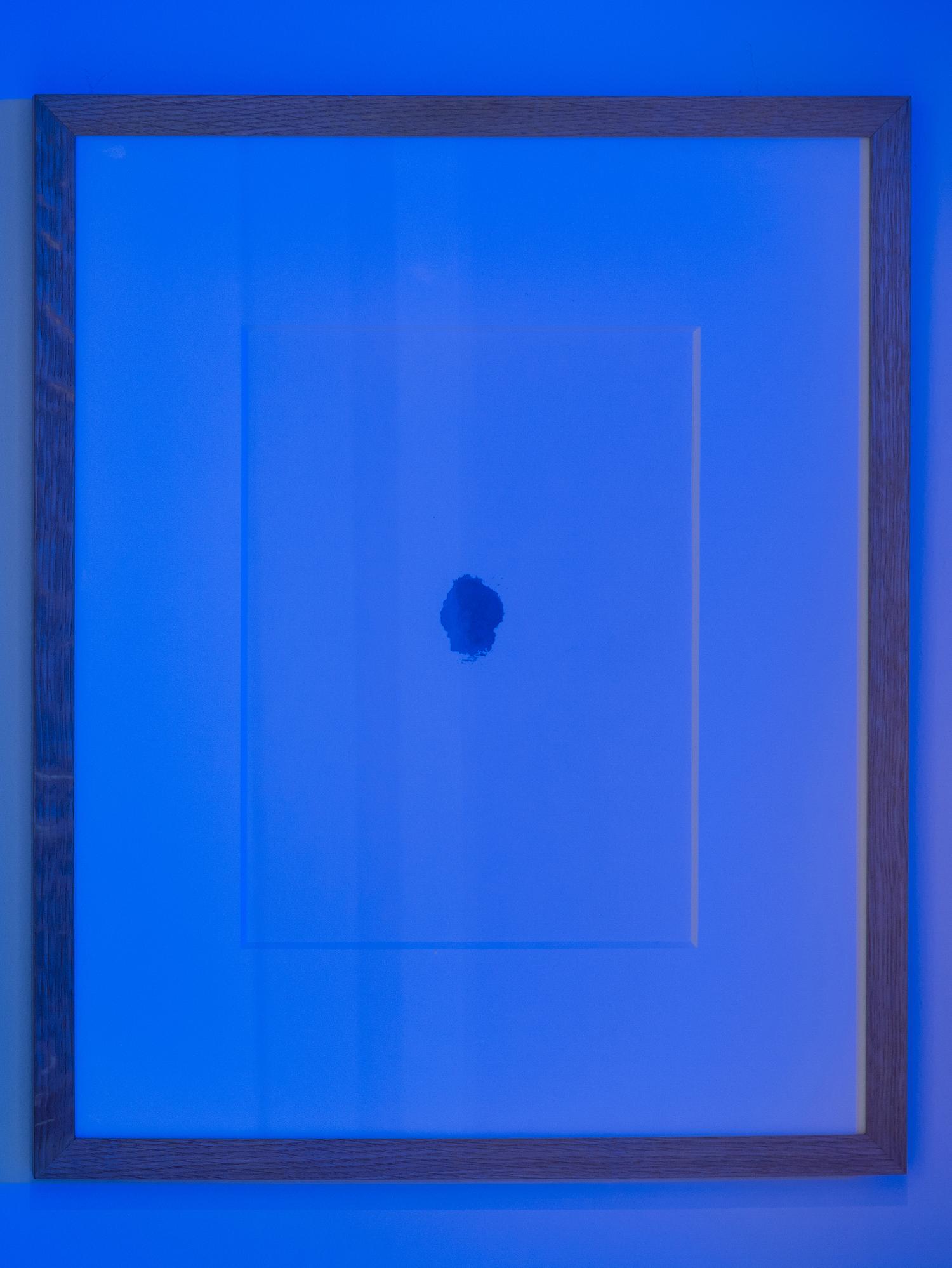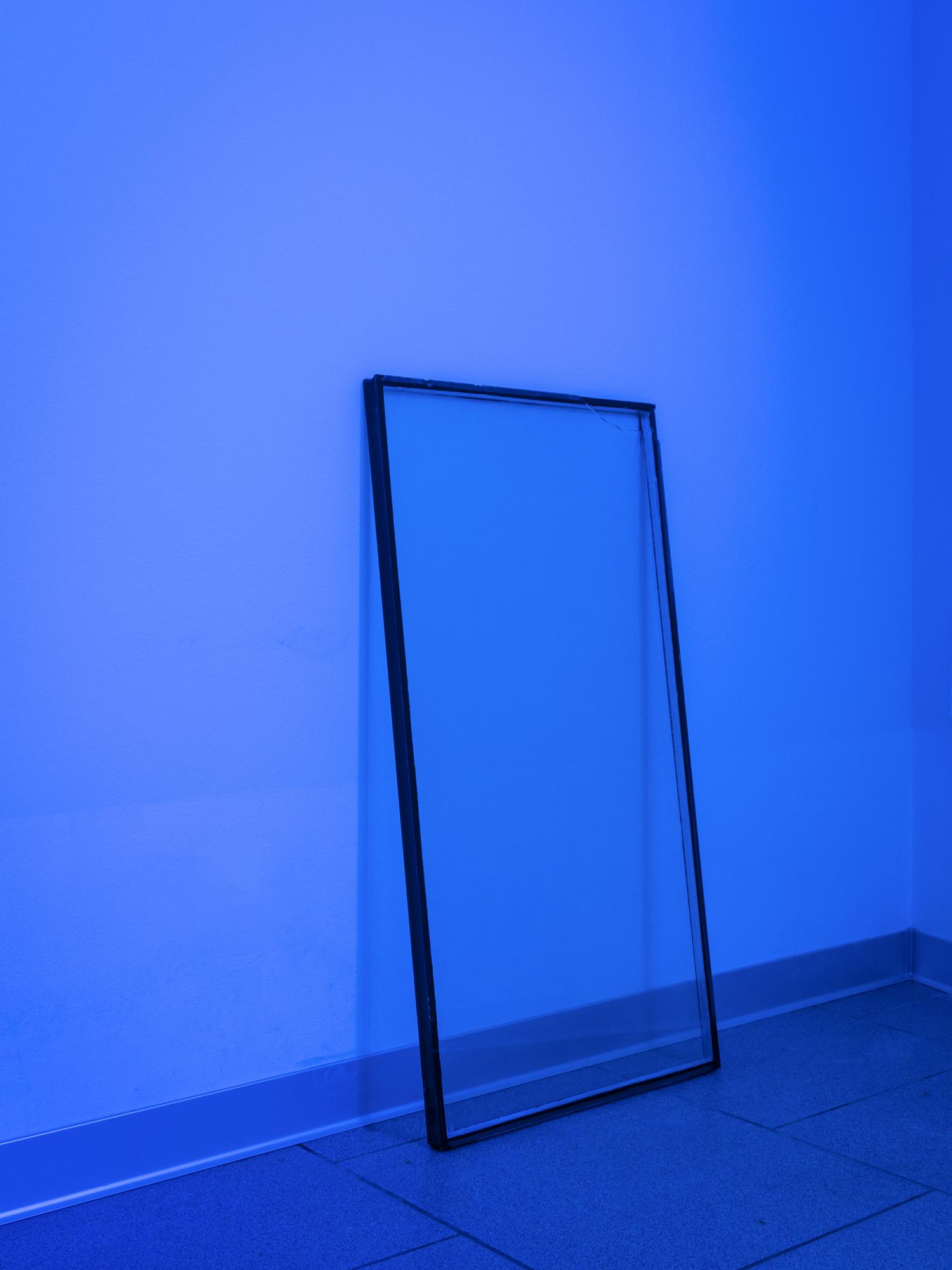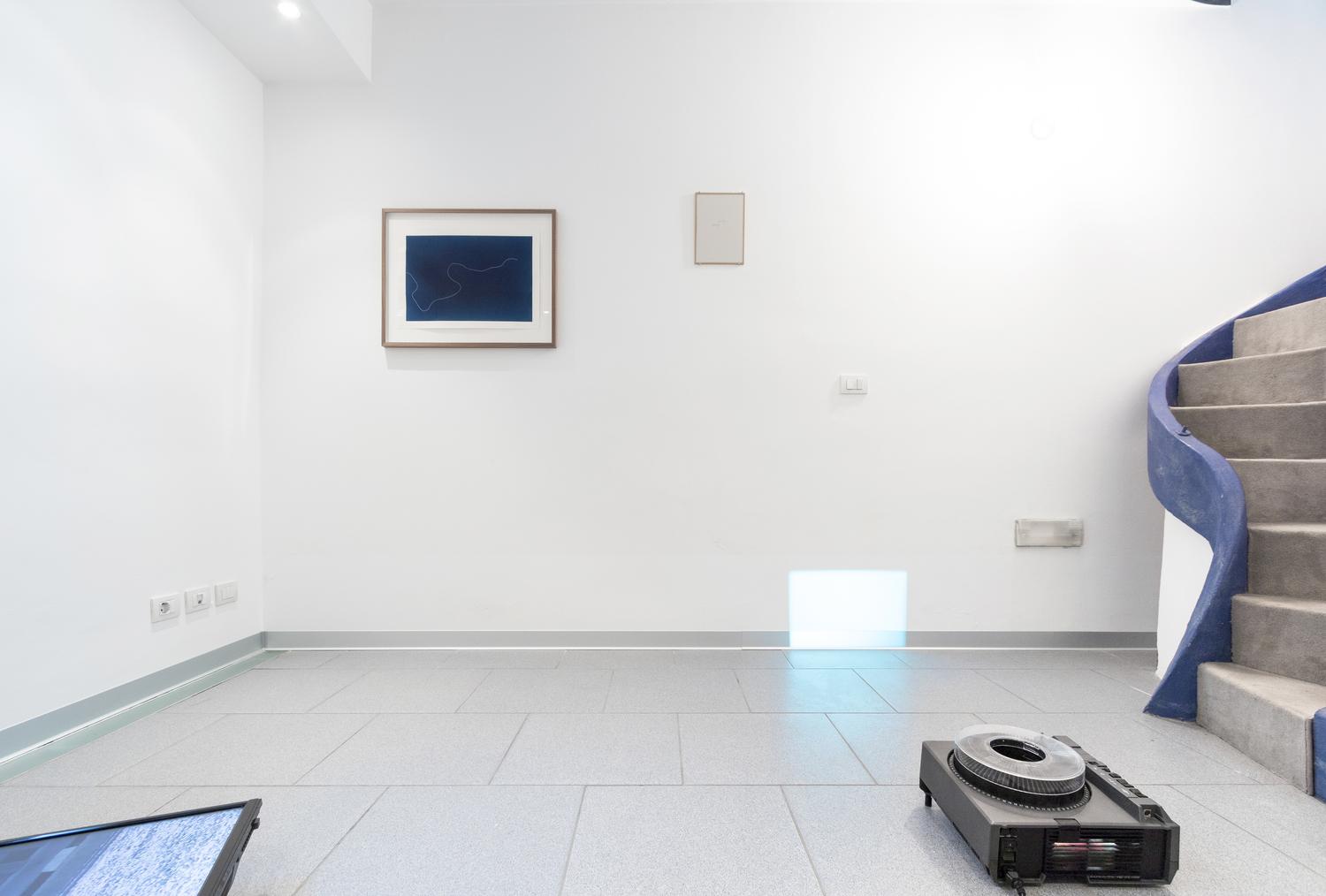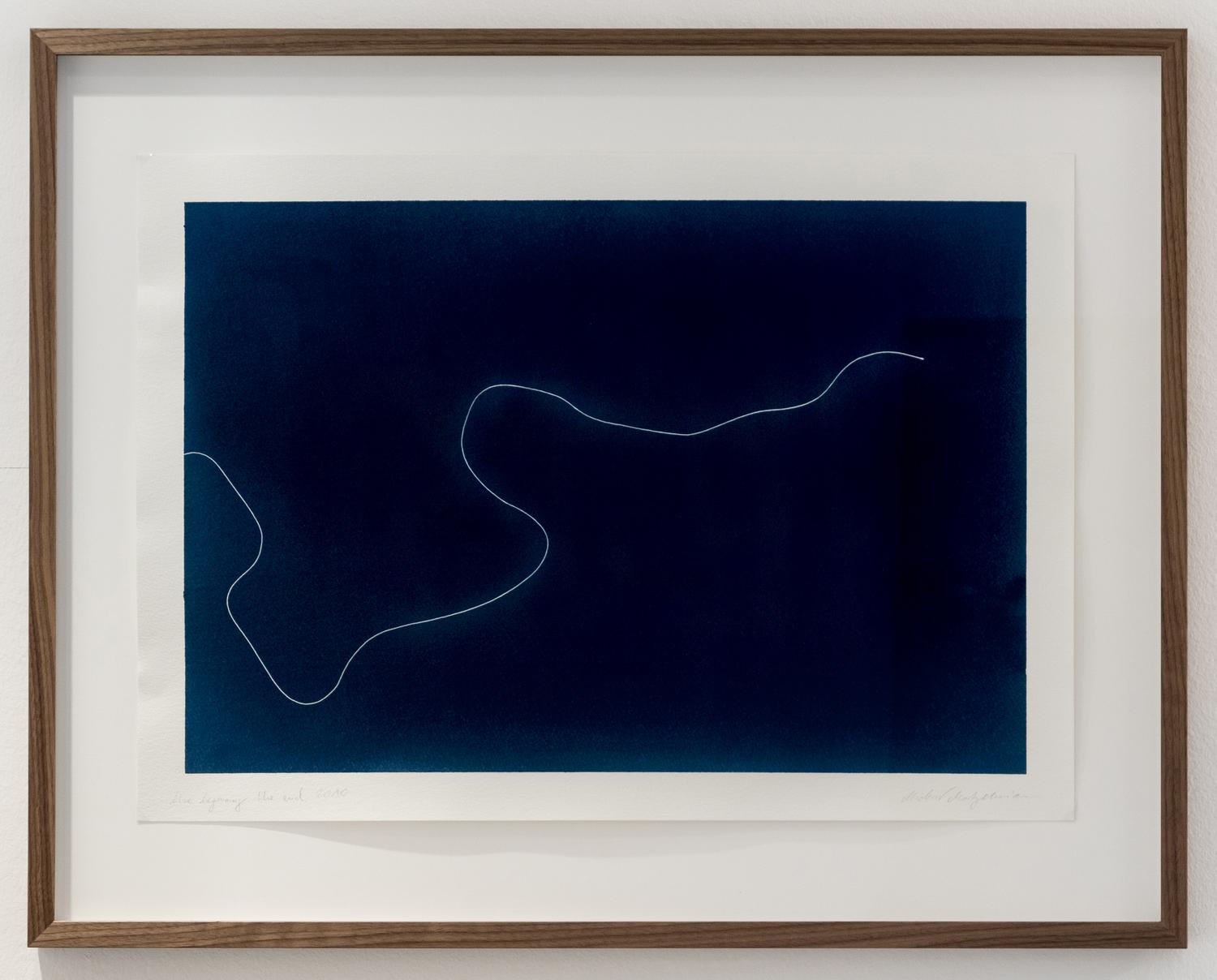Michal Martychowiec
Empty Rooms 13 April ︎︎︎ 08 June 2019
di Jessica Bianchera
Per il terzo appuntamento espositivo di Spazio Cordis abbiamo scelto un giovane artista di origine polacca, Michal Martychowiec, che attualmente è di base a Berlino e che dimostra una straordinaria versatilità nell’utilizzo di numerosi media (dalla fotografia al video, dall’installazione al disegno, dal neon alla parola come significato e significante) oltre a un’acuta capacità di analisi rispetto alla storia, alla letteratura, alle problematiche socio-politiche contemporanee con un’apertura al contesto internazionale che include sia il “Vecchio continente” (a cui vanno sicuramente ricondotti i riferimenti alla tradizione classica e in particolare ai poemi omerici e ai miti greci, ma anche le riflessioni sulle rivoluzioni in Francia dal 1848 a oggi), sia i Paesi oltreoceano raggiungendo per esempio il Giappone con l’opera The shrine to summon the souls.
For the third Spazio Cordis exhibition, we have chosen a young artist of Polish origin, Michal Martychowiec, who is currently based in Berlin. Martychowiec’s work displays an extraordinary versatility in the use of various media (from photography to video, from installation to design, from neon to the word as both signified and signifier). The artist also has an acute analytical capacity with respect to history, literature, and contemporary socio-political issues, with an openness to the international context that stretches from the so-called Old Continent (with references to the classical tradition and, in particular, to the Homeric poems, the Greek myths, and reflections on the revolutions in France from 1848 to the present) to the Far East, for example Japan, with his piece The Shrine to Summon the Souls.
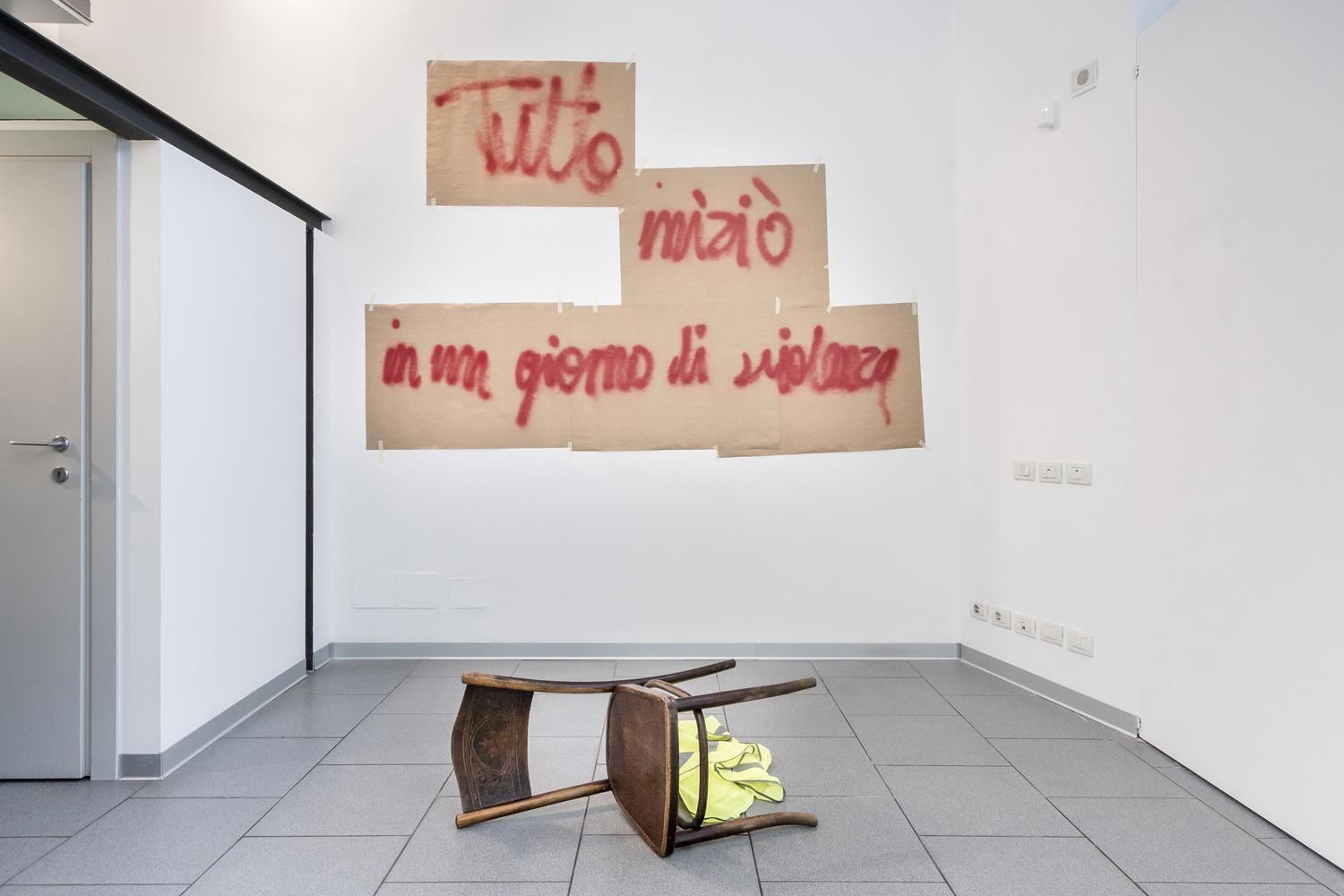
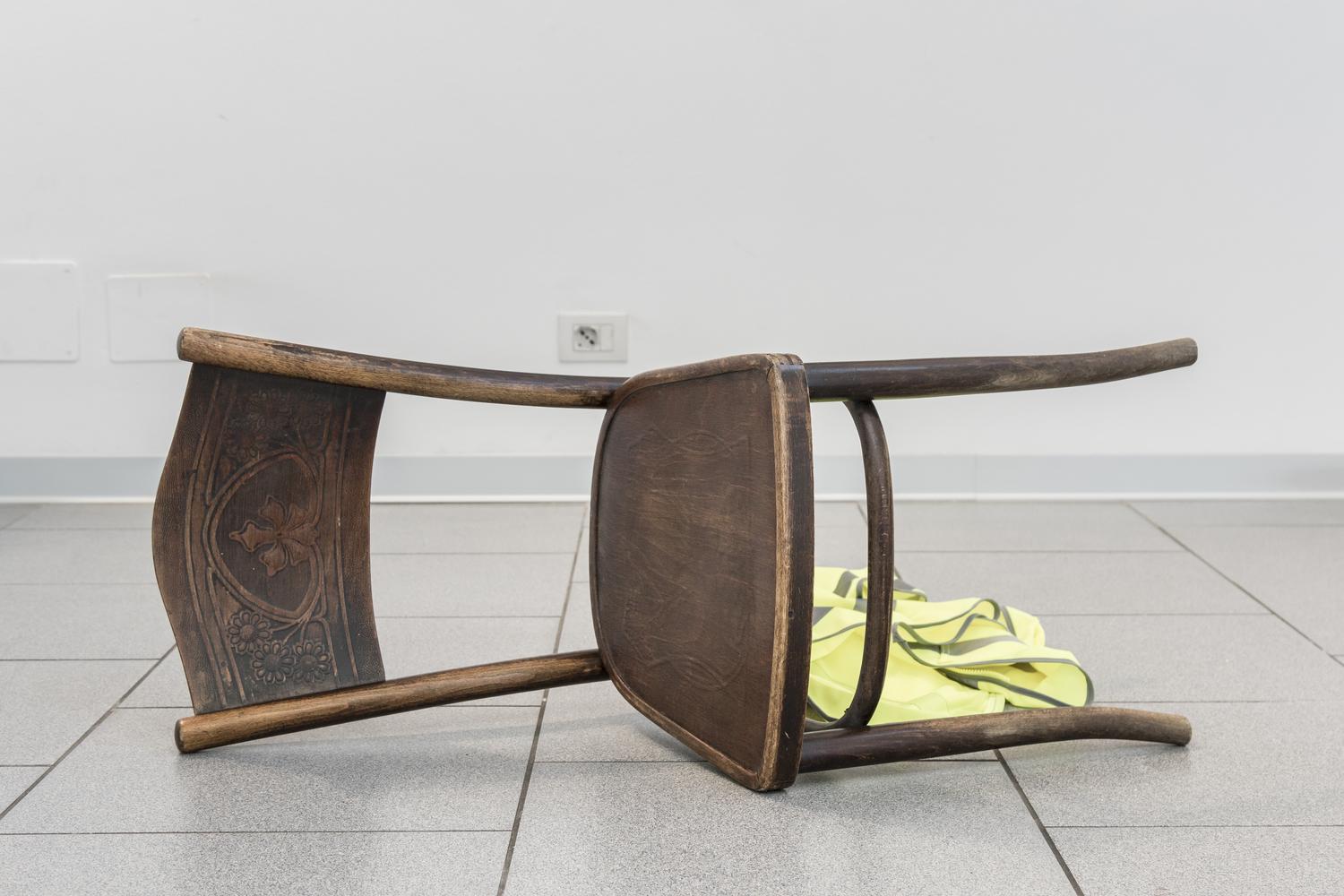
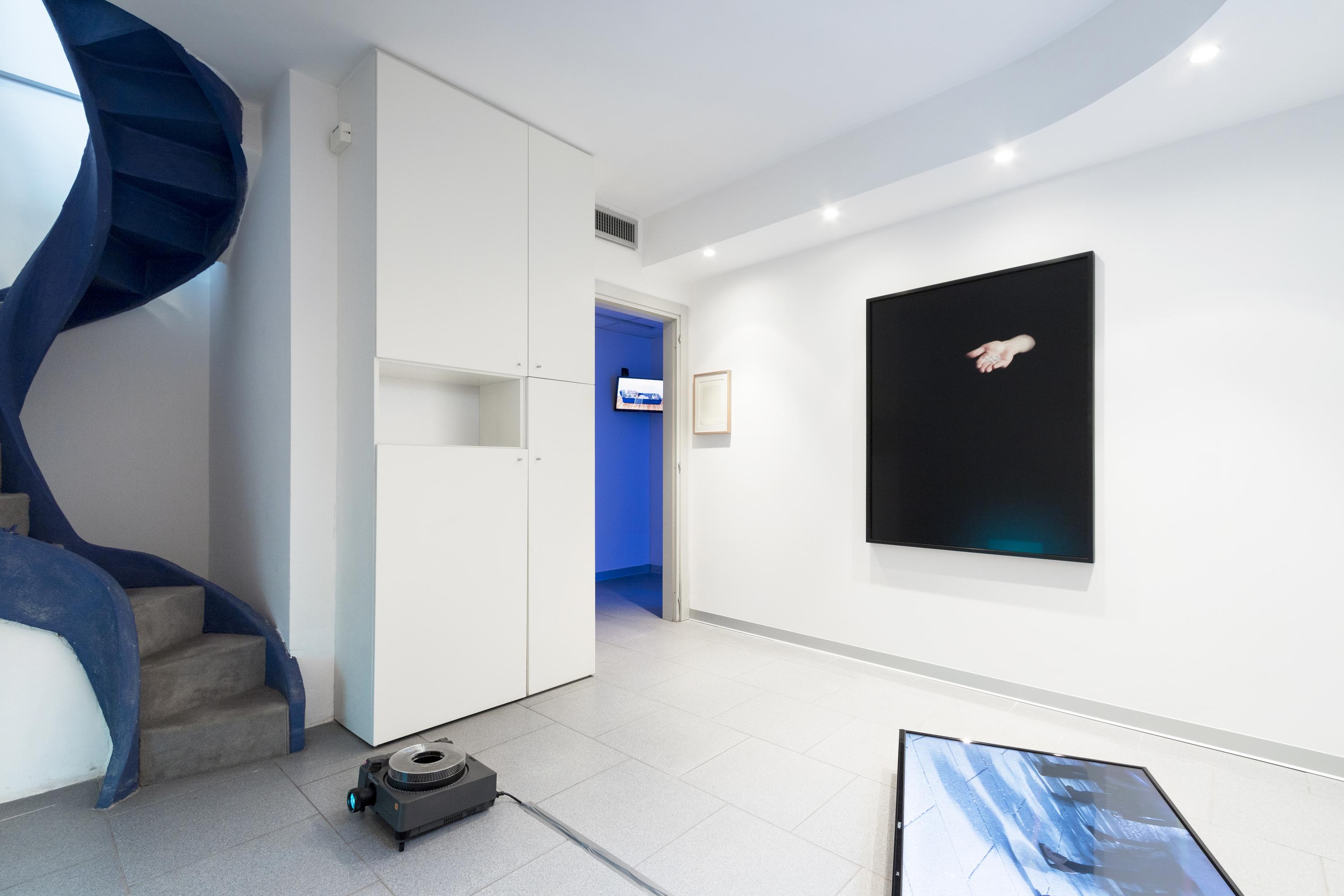
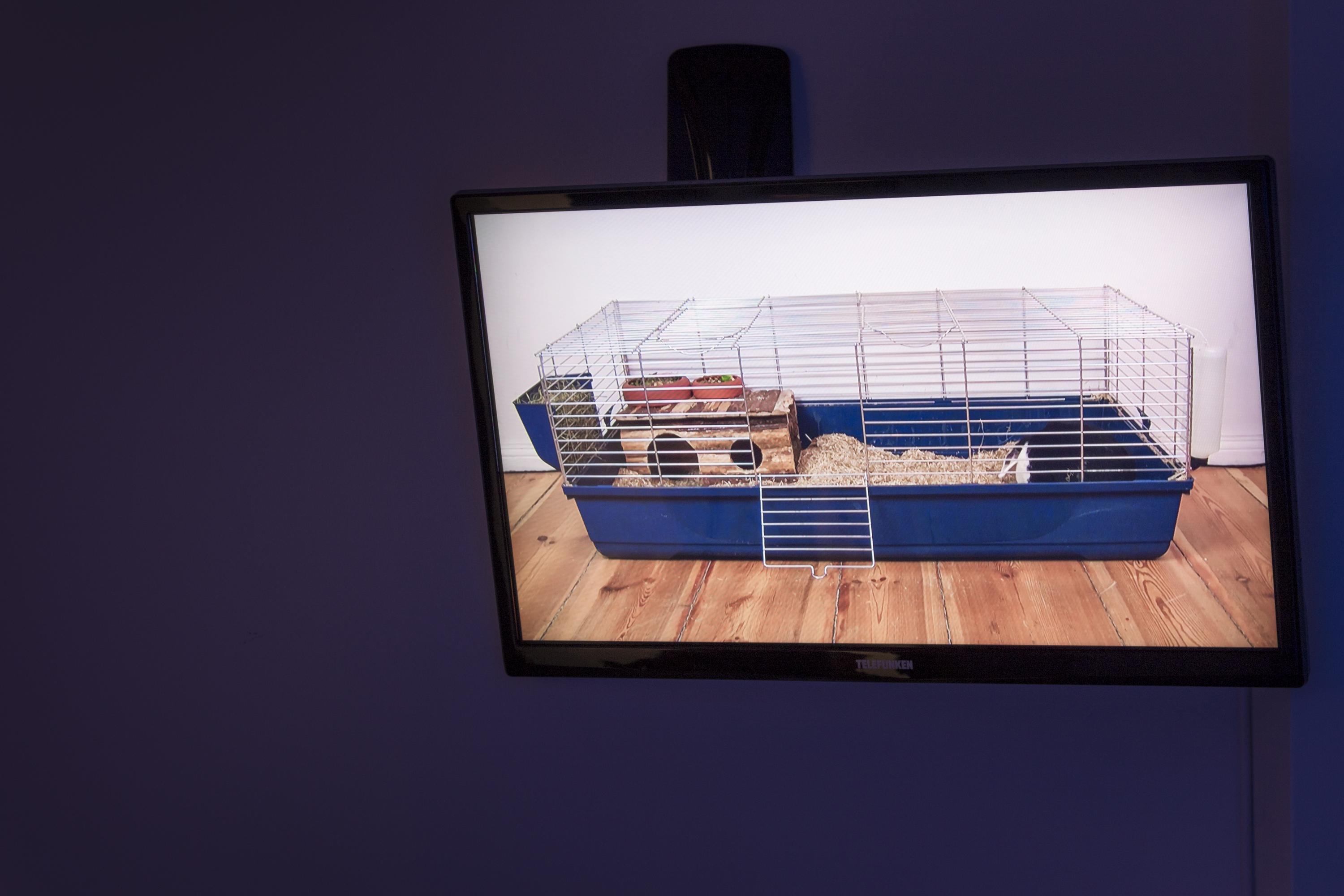
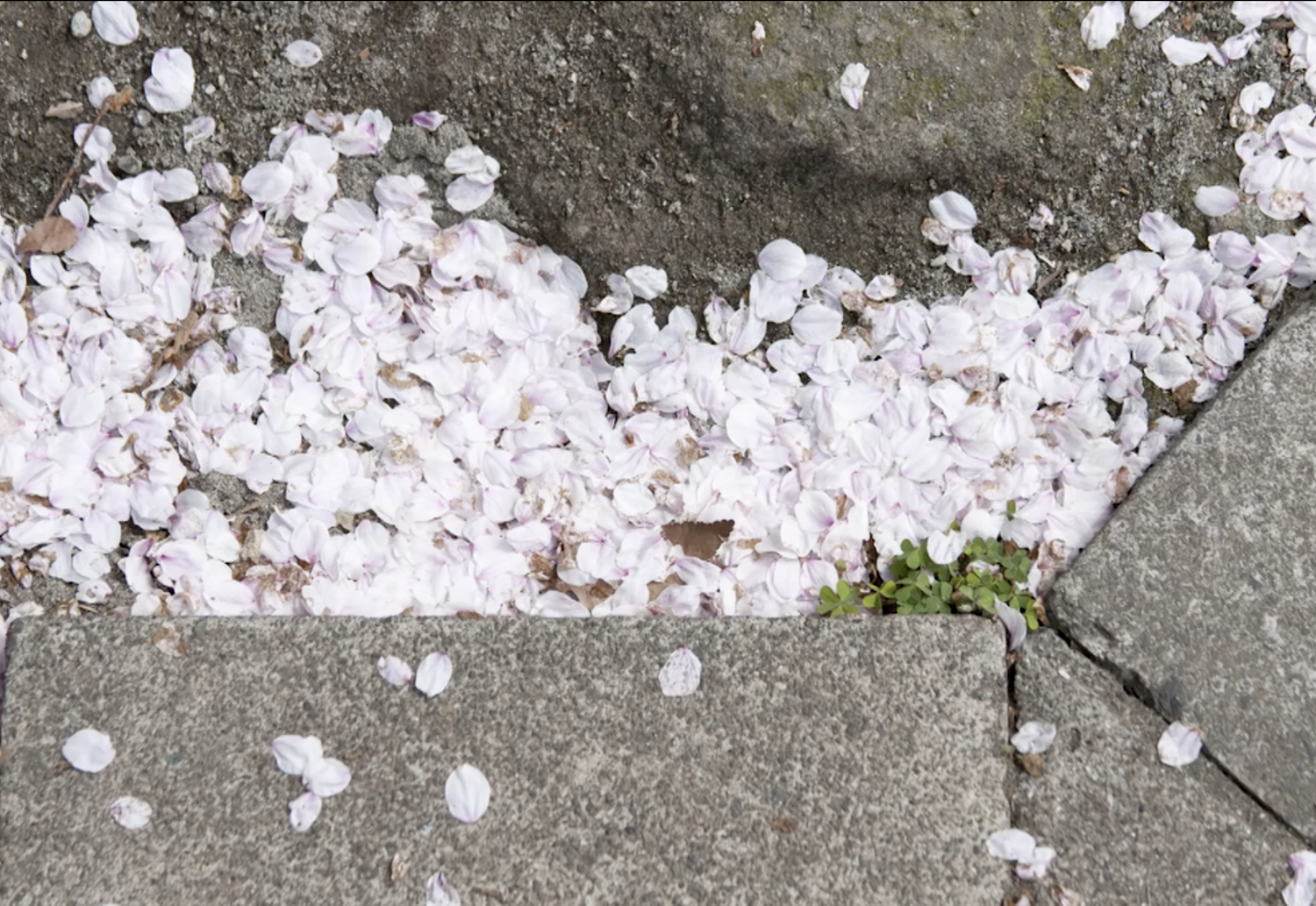
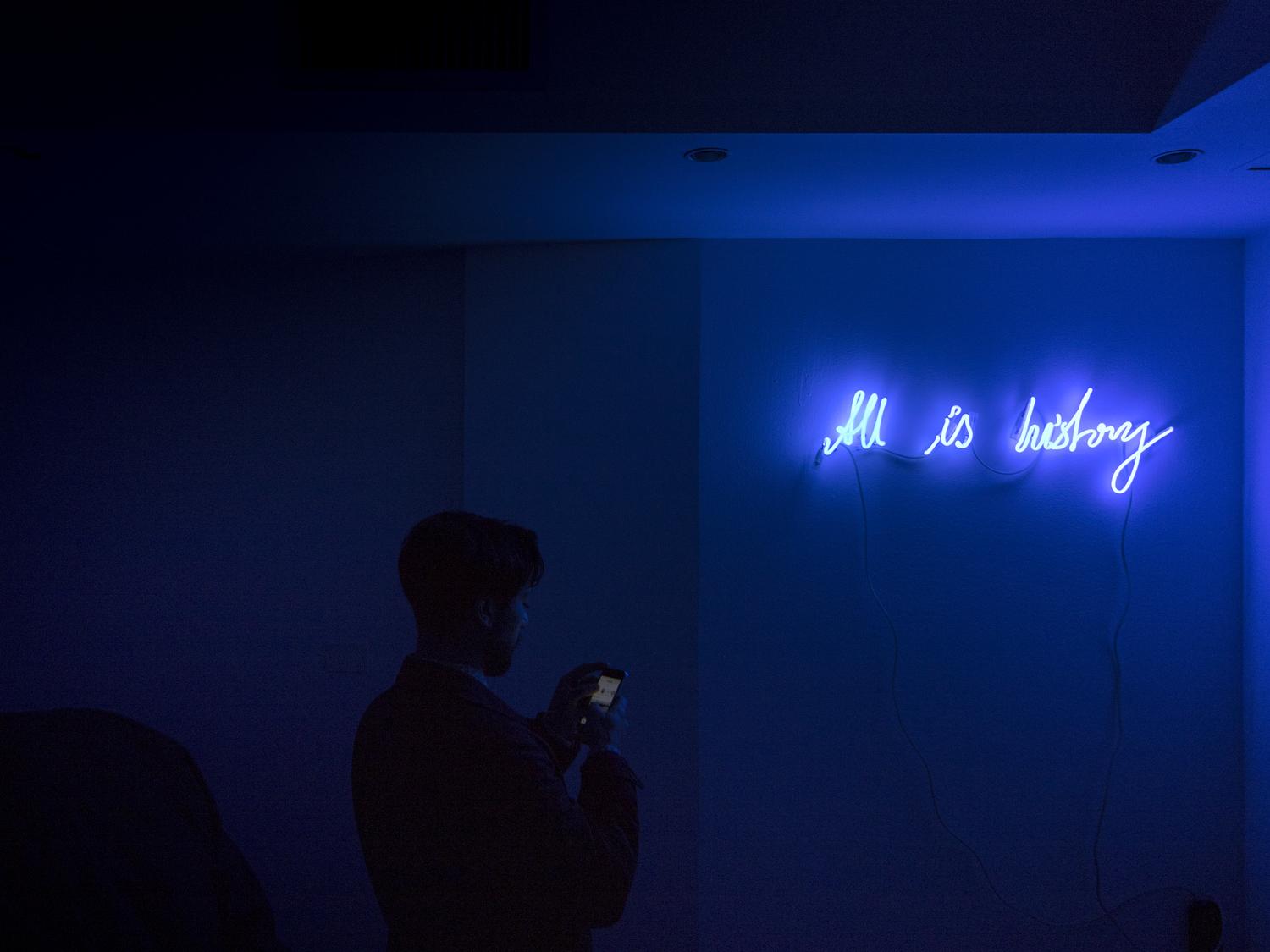
La mostra raccoglie una selezione di lavori realizzati dall’artista ragionando sui concetti di violenza, libertà e bellezza in rapporto a cambiamenti storici e sociali nell’ambito della comunicazione e dell’esercizio del potere. In particolare, Martychowiec propone due nuclei tematici che si intrecciano: il reiterarsi nella storia di episodi di violenza legati ad affermazioni di libertà e le distorsioni nel rapporto con l’altro vissute dall’uomo contemporaneo nell’epoca di Internet e della tecnologia digitale. A questi si sovrappone la riflessione sull’esercizio del potere, non solo nell’accezione di “potere costituito”
e manipolazione dell’informazione, ma anche a livello di relazioni personali, sociali, private e comunitarie. A fare da filo conduttore, la memoria e le modalità attraverso le quali l’arte e la poesia diventano strumenti per preservarla unendo il passato più remoto al futuro futuribile. Il titolo della mostra, Empty Room, la camera vuota, incrocia questi temi singolarmente e in maniera trasversale laddove si configura come luogo fisico in cui le dinamiche percettive sono state alterate, come spazio virtuale in cui si attuano relazioni distorte e come assenza figurata per sottrazione o trasformazione dei significati. L’espressione nasce in relazione al mondo dellechat room e quindi si lega al tema della comunicazione e dei rapporti interpersonali dopo l’avvento di internet. Le chat room sono spazi virtuali dove è possibile instaurare una conversazione, scambiarsi idee, avviare dibattiti, ma in cui l’assenza di contatto visivo e di relazione fisica abbatte ogni possibile reticenza, sottrae i soggetti dal confronto con le urgenze, gli imbarazzi, i desideri inespressi. Le dinamiche del potere in un mondo di interazioni a-corporee si modificano e cambiano prendendo strade inaspettate e trasformando la natura stessa dell’uomo contemporaneo. Il confronto con il reale viene meno e così la percezione dei fatti, dei gesti, delle intenzioni. Così se la chat room si presenta come un non luogo, uno spazio in cui domina l’assenza, l’empty room è un’assenza alla seconda: è la sottrazione improvvisa e irreversibile dell’interlocutore, l’interruzione repentina del dialogo, la censura arbitraria su una conversazione. È il silenzio di uno spazio vuoto, la cancellazione di una storia, un atto violento quanto un pugno nello stomaco. Nel mondo digitale si sono sviluppati nuovi e inaspettati modi di esercitare il potere e la violenza: internet nasce per liberare l’informazione e aprire il mondo a infinite possibilità di scambio e conoscenza, ma si trasforma ben presto in un subdolo strumento di controllo e manipolazione dell’informazione.
e manipolazione dell’informazione, ma anche a livello di relazioni personali, sociali, private e comunitarie. A fare da filo conduttore, la memoria e le modalità attraverso le quali l’arte e la poesia diventano strumenti per preservarla unendo il passato più remoto al futuro futuribile. Il titolo della mostra, Empty Room, la camera vuota, incrocia questi temi singolarmente e in maniera trasversale laddove si configura come luogo fisico in cui le dinamiche percettive sono state alterate, come spazio virtuale in cui si attuano relazioni distorte e come assenza figurata per sottrazione o trasformazione dei significati. L’espressione nasce in relazione al mondo dellechat room e quindi si lega al tema della comunicazione e dei rapporti interpersonali dopo l’avvento di internet. Le chat room sono spazi virtuali dove è possibile instaurare una conversazione, scambiarsi idee, avviare dibattiti, ma in cui l’assenza di contatto visivo e di relazione fisica abbatte ogni possibile reticenza, sottrae i soggetti dal confronto con le urgenze, gli imbarazzi, i desideri inespressi. Le dinamiche del potere in un mondo di interazioni a-corporee si modificano e cambiano prendendo strade inaspettate e trasformando la natura stessa dell’uomo contemporaneo. Il confronto con il reale viene meno e così la percezione dei fatti, dei gesti, delle intenzioni. Così se la chat room si presenta come un non luogo, uno spazio in cui domina l’assenza, l’empty room è un’assenza alla seconda: è la sottrazione improvvisa e irreversibile dell’interlocutore, l’interruzione repentina del dialogo, la censura arbitraria su una conversazione. È il silenzio di uno spazio vuoto, la cancellazione di una storia, un atto violento quanto un pugno nello stomaco. Nel mondo digitale si sono sviluppati nuovi e inaspettati modi di esercitare il potere e la violenza: internet nasce per liberare l’informazione e aprire il mondo a infinite possibilità di scambio e conoscenza, ma si trasforma ben presto in un subdolo strumento di controllo e manipolazione dell’informazione.
The exhibition brings together a selection of works in which the artist explores the concepts of violence, freedom and beauty in relation to historical and social changes in the field of communication and the exercise of power. In particular, Martychowiec proposes two intertwined thematic nuclei: the repetition in history of episodes of violence linked to affirmations of freedom, and the distortions in the relationship with the other experienced by contemporary human beings in the age of the Internet and digital technology. These are overlaid with a reflection on the exercise of power, not only in the sense of "constituted power and the manipulation of information, but also in terms of personal, social, private and community relations. Acting as a common thread is memory, and the ways in which art and poetry become tools for its preservation by combining the remotest past with the futurist future. The exhibition title, Empty Room, intersects these themes both individually and transversally, appearing as a physical place in which the dynamics of perception have been altered, as a virtual space in which distorted relationships arise, and as a figurative absence generated by the subtraction or transformation of meanings. The title refers to the world of chat rooms, and is therefore linked to the theme of communication and interpersonal relationships after the advent of the Internet. Chat rooms are virtual spaces in which people engage in conversation, exchange ideas, initiate debates, but in which the lack of visual contact and physical relationship eliminates all reticence, allowing the subjects to eschew confrontation with urges, embarrassments, unspoken desires. The dynamics of power in a world of a-corporeal interactions change by taking unexpected paths, transforming the very nature of contemporary human beings. The comparison with reality is lacking, as is the perception of actions, gestures, intentions. So if the chat room appears as a non-place, a space in which absence dominates, the empty room is absence squared: the sudden and irreversible subtraction of the interlocutor, the abrupt interruption of dialogue, the arbitrary censoring of a conversation. It is the silence of an empty space, the erasure of a story, a gesture as violent as a punch in the stomach. In the digital world, new and unexpected ways of exercising power and violence have been developed: the Internet was born to free up information and open the world to endless possibilities of exchange and knowledge, but soon turned into a devious instrument of control and manipulation of information.
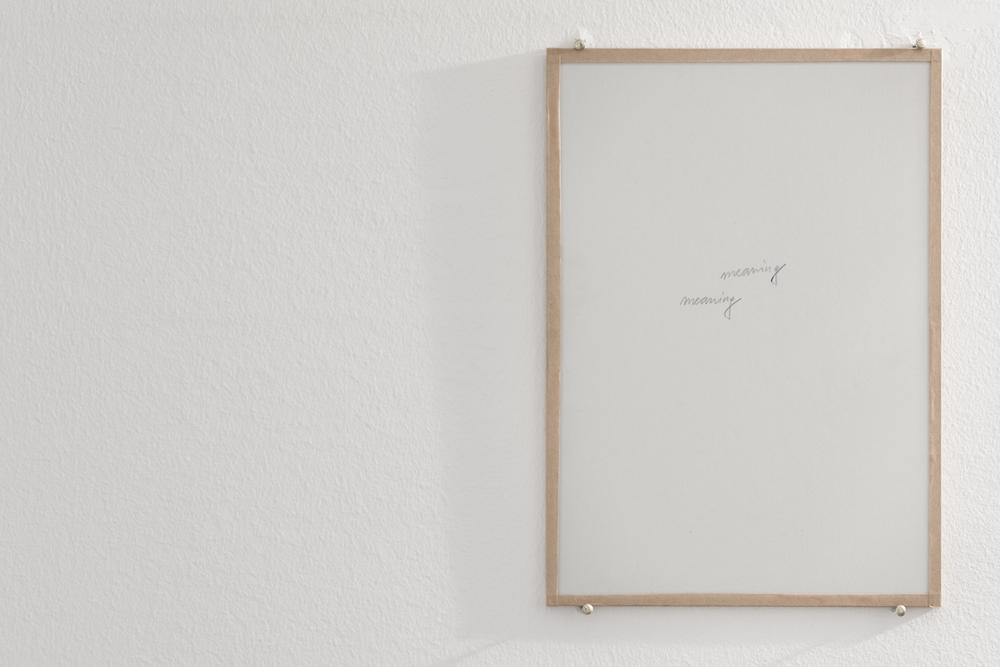
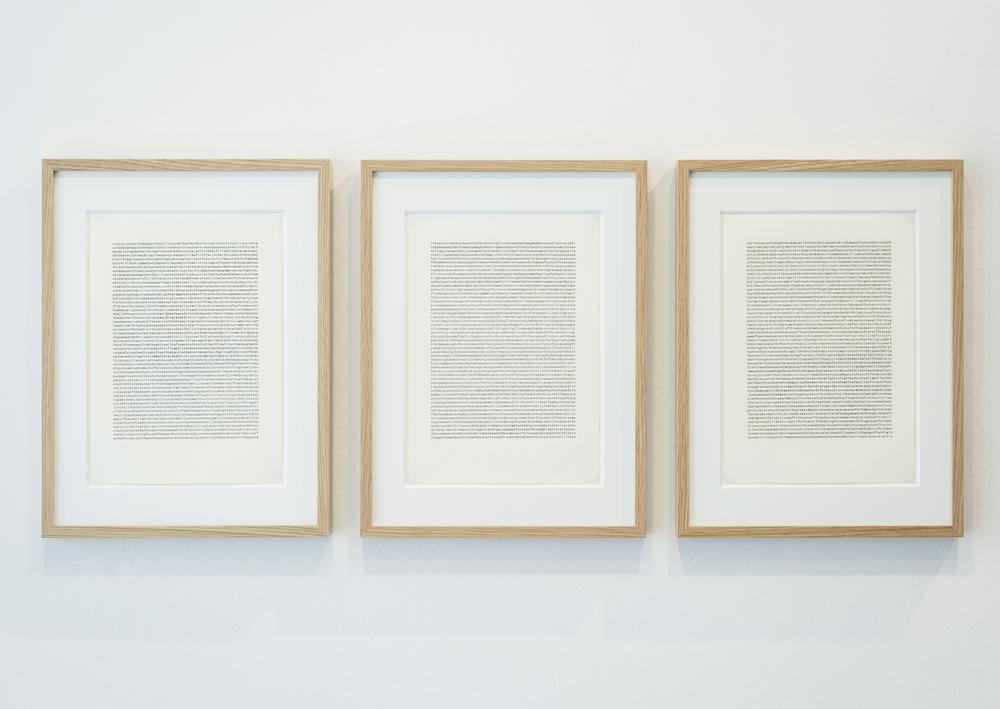
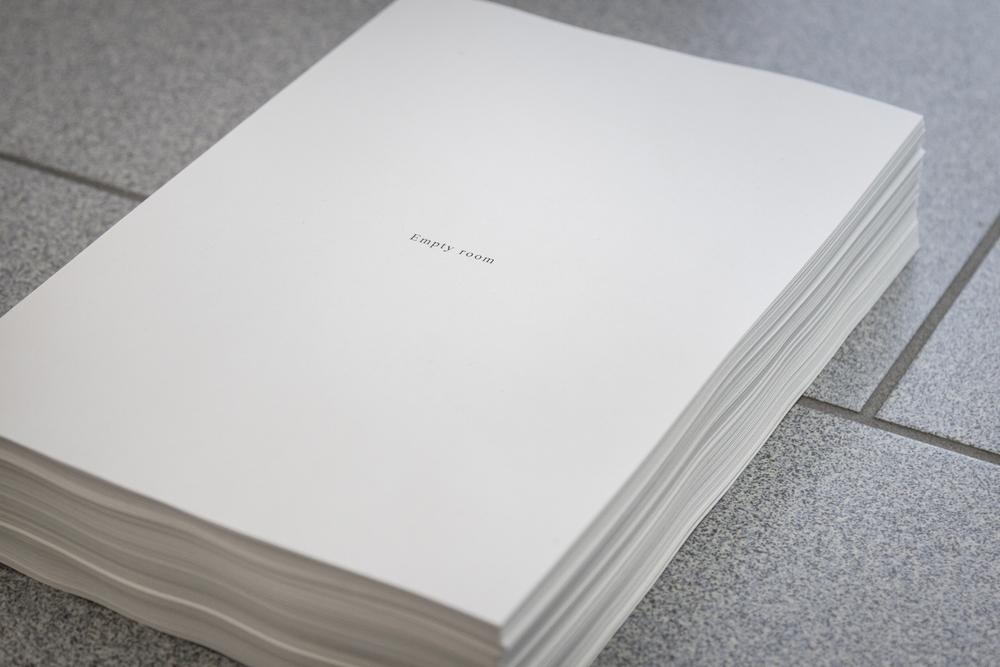
Tutto iniziò in un giorno di violenza è in questo senso un’opera manifesto: l’opera riproduce una frase tratta da Alessandro Baricco, più precisamente dalla sua riscrittura in chiave contemporanea dell’Iliade. La prima testimonianza della storia della letteratura occidentale non esordisce con un gesto d’amore, ma con un atto di violenza, con l’infuriare della guerra, una guerra significativamente tesa a un riscatto - quello di Elena rapita dai troiani e condotta in nome della libertà. Lo stesso accade nel caso delle guerre e rivoluzioni contemporanee: violenza e libertà, controllo e potere legano la storia antica al mondo di oggi. Ripercorrendo i cicli e i ricicli della storia, ogni grido di libertà è stato accompagnato da un atto di violenza incontrollata, di cui l’arte e la poesia conservano memoria sottoponendo ogni evento a un filtro estetizzante: La libertà che guida il popolo di Delacroix ricorda le “Tre Gloriose Giornate” del luglio 1830 con una figura allegorica che calpesta un cumulo di corpi e macerie imbracciando un fucile; delle movimentazioni studentesche del ’68 si ricordano i motti e gli slogan (“Sous les pavés, la plage!” per esempio viene utilizzato da Martychowiec per un intero ciclo di opere); il Mouvement des Gilets Jaunes, già soggetto al filtro della storia pur appartenendo al nostro presente, diventa il protagonista dell’installazione Empty Room, in cui una sedia scagliata a terra insieme a un gilet giallo simboleggia l’irruenza di un atto di rabbia quasi domestico e quotidiano riportandolo contemporaneamente al tema delle barricate. In fondo tutto è storia, All is history: grandi avvenimenti e piccoli fatti entrano nel flusso della storia nel momento stesso in cui stanno accadendo, è di essi cosa resta?What remains the poets provide, ricorda un’altra delle opere in mostra, mentre in The shrine to summon the souls il lento cadere dei petali rosa nel Santuario Yasukuni a Tokyo (dedicato alle anime di soldati e civili che morirono combattendo al servizio dell’Imperatore durante la Seconda guerra mondiale) si accompagna a testi e musiche del film La rabbia di Pasolini: “Del terrificante mondo del passato, e del terrificante mondo del futuro, non resta che la bellezza”.
In this sense, Everything Began on a Day of Violence is a manifesto: the work reproduces a phrase taken from Alessandro Baricco, and more precisely from his rewriting of the Iliad in a contemporary key. The first testament to the history of Western literature begins not with a gesture of love but with an act of violence: the outbreak of a war, one significantly aimed at a ransom - that of Helen kidnapped by the Trojans - and fought in the name of freedom. The same happens in the case of contemporary wars and revolutions: violence and freedom, control and power link ancient history to today's world. Retracing the cycles and re-cycles of history, every cry of freedom has been accompanied by an act of uncontrolled violence, of which art and poetry preserve a memory by subjecting each event to an aesthetic filter: Delacroix’s Liberty Leading the People recalls the “Three Glorious Days” of July 1830 with an allegorical figure trampling a pile of bodies and rubble, holding a rifle; of the student movements of ‘68 we recall the mottoes and slogans (“Sous les pavés, la plage!” “Under the pavement lies the beach” for example is used by Martychowiec for an entire series of works); the Yellow Vests Movement, which is already subject to the filter of history even while still belonging to our present, becomes the protagonist of Empty Room: an installation in which a chair being thrown to the ground along with a yellow vest symbolize the impetuosity of an almost domestic and daily act of anger, while at the same time eliciting the theme of the barricades. Ultimately, All is History: great events and small incidents enter the flow of history at the very moment in which they happen, and what remains of them? What Remains the Poets Provide, recalls another of the works on display; while in The Shrine to Summon the Souls the slow falling of the rose petals in the Yasukuni Shrine in Tokyo (dedicated to the souls of soldiers and civilians who died fighting in the service of the Emperor during the Second World War) is accompanied by texts and music from Pasolini’s film La Rabbia (Anger): “Of the terrifying world of the past, and of the terrifying world of the future, all that remains is beauty”.
